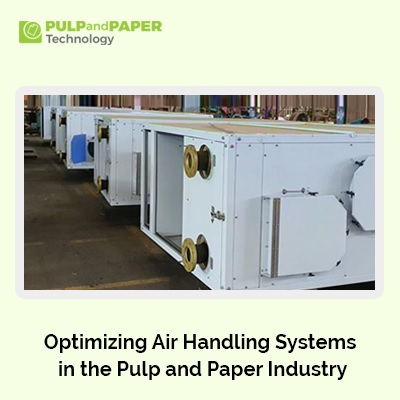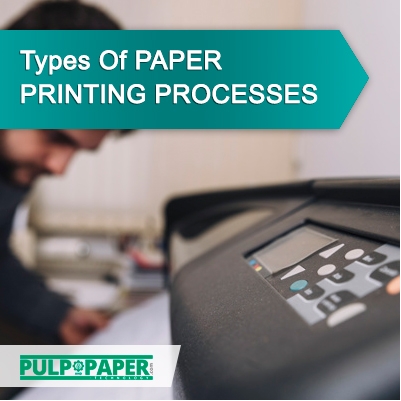Optimizing Air Handling Systems in the Pulp and Paper Industry

Introduction
In the dynamic world of pulp and paper manufacturing, optimizing air handling systems plays a pivotal role in ensuring efficient operations, maintaining product quality, and promoting a healthy work environment. Air handling systems encompass a range of equipment and processes designed to control air quality, temperature, humidity, and ventilation within manufacturing facilities. This article explores the significance of optimizing air handling systems in the pulp and paper industry, key components and processes involved, challenges faced, best practices, and future trends shaping this crucial aspect of industrial operations.
I. Importance of Air Handling Systems in the Pulp and Paper Industry
Air handling systems are essential for maintaining optimal conditions throughout various stages of pulp and paper production. They play a vital role in:
Temperature and Humidity Control: Air handling systems regulate ambient temperature and humidity levels to ensure consistency in production processes and prevent moisture-related issues that can affect product quality.
Dust and Particle Removal: Pulp and paper manufacturing involves handling fibrous materials that can generate dust and particles. Proper air filtration and purification help minimize airborne contaminants, improving air quality and reducing health risks for workers.
Ventilation and Airflow: Adequate ventilation and airflow management are critical for maintaining a safe and comfortable working environment, preventing the buildup of harmful gases, and enhancing overall indoor air quality.
Energy Efficiency: Optimized air handling systems contribute to energy conservation by using advanced technologies such as energy-efficient fans, motors, and controls, reducing operational costs and environmental impact.
II. Key Components of Air Handling Systems
Air Filtration Units: High-efficiency particulate air (HEPA) filters, electrostatic precipitators, and other filtration units remove airborne contaminants and particulates, ensuring clean air for manufacturing processes.
Ventilation Systems: Ductwork, exhaust fans, and ventilation hoods facilitate airflow and exhaust of stale air, smoke, and odors from production areas, maintaining a fresh and healthy environment.
Humidification and Dehumidification Equipment: Humidifiers and dehumidifiers control moisture levels in the air, preventing issues like paper curling, wrinkling, or static electricity buildup.
Heat Recovery Systems: Heat exchangers and recovery systems capture and reuse heat from exhaust air, improving energy efficiency and reducing heating costs.
Air Quality Monitoring and Control Devices: Sensors, monitors, and automated control systems ensure real-time monitoring of air quality parameters such as temperature, humidity, CO2 levels, and particulate matter, enabling prompt adjustments for optimal conditions.
III. Challenges and Solutions
Despite their critical role, optimizing air handling systems in the pulp and paper industry comes with challenges:
Complexity: Pulp and paper manufacturing processes involve diverse equipment and operations, making it challenging to design and integrate efficient air handling systems.
Energy Consumption: Traditional air handling systems can consume significant energy, necessitating the adoption of energy-efficient technologies and practices.
Maintenance Requirements: Regular maintenance and cleaning of air handling components are essential to prevent downtime, ensure performance efficiency, and prolong equipment lifespan.
To address these challenges, industry stakeholders are implementing several strategies:
Advanced Control Systems: Automation, IoT-enabled sensors, and predictive analytics optimize system performance, improve energy management, and enable proactive maintenance.
Energy-Efficient Technologies: Upgrading to energy-efficient fans, motors, and variable frequency drives (VFDs) reduces energy consumption while maintaining airflow and ventilation requirements.
Scheduled Maintenance and Monitoring: Implementing routine maintenance schedules, inspections, and monitoring protocols minimize downtime, identify potential issues early, and ensure optimal system functioning.
IV. Best Practices for Optimizing Air Handling Systems
Design Considerations: Incorporate modular designs, proper ductwork sizing, and layout optimization to maximize airflow efficiency and minimize pressure losses.
Airflow Balancing: Regularly calibrate airflow rates, adjust dampers, and optimize fan speeds to achieve optimal airflow distribution and ventilation throughout the facility.
Filter Maintenance: Follow a comprehensive filter maintenance schedule, including regular replacements and cleaning to maintain filtration efficiency and prevent contaminants from entering production areas.
Energy Management: Implement energy management strategies such as heat recovery, variable air volume (VAV) control, and demand-based ventilation to optimize energy usage and reduce operational costs.
Training and Education: Provide training programs for maintenance personnel and operators on proper system operation, troubleshooting techniques, and safety protocols to ensure effective system management and performance.
V. Future Trends and Innovations
The future of air handling systems in the pulp and paper industry is driven by technological advancements and sustainability initiatives:
Smart Air Handling Systems: Integration of AI, machine learning, and predictive analytics enables real-time monitoring, predictive maintenance, and optimization of air handling systems for enhanced efficiency and reliability.
Green Technologies: Adoption of renewable energy sources, green building designs, and eco-friendly materials in air handling equipment promotes sustainability and reduces environmental impact.
IoT Connectivity: Connected air handling systems with IoT sensors and cloud-based platforms enable remote monitoring, data analysis, and performance optimization, enhancing overall system control and management.
Air Quality Focus: Increasing emphasis on indoor air quality (IAQ) drives the development of advanced filtration technologies, air purification systems, and IAQ monitoring solutions to ensure a healthy and productive work environment.
Conclusion
Optimizing air handling systems is a critical aspect of enhancing operational efficiency, maintaining product quality, and promoting a safe and healthy workplace in the pulp and paper industry. By leveraging advanced technologies, adopting energy-efficient practices, and implementing proactive maintenance strategies, manufacturers can achieve optimal performance, reduce environmental impact, and stay competitive in a rapidly evolving industry landscape.









